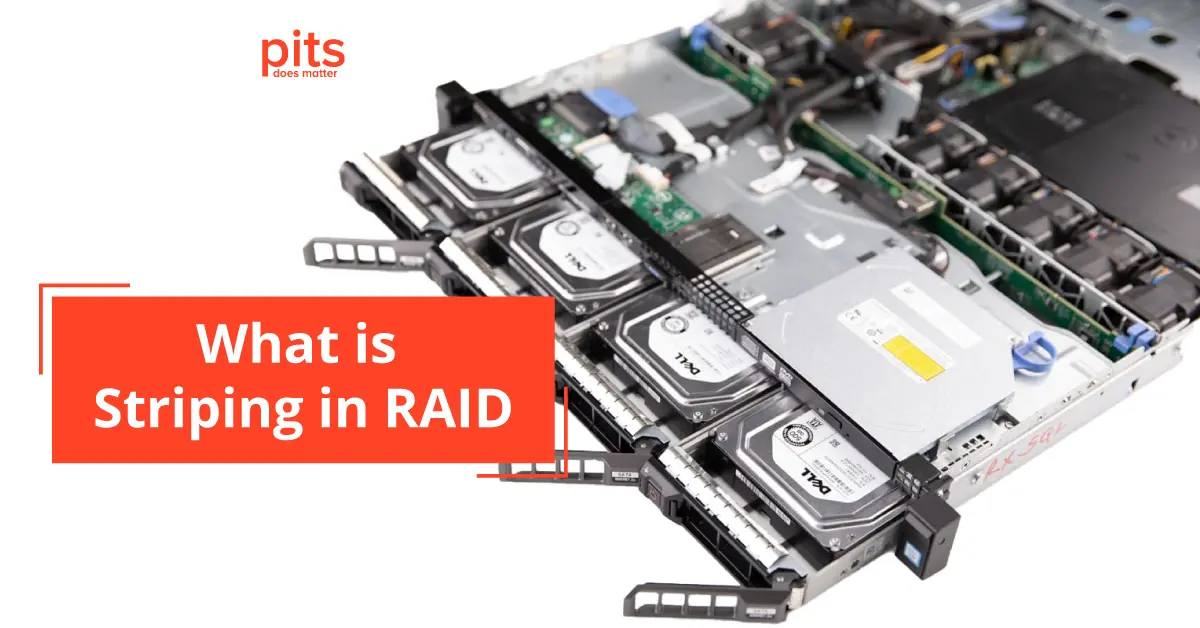The technology known as RAID, or Redundant Array of Independent Disks, has transformed data storage by providing superior performance, redundancy, and reliability. One of the key principles in RAID configurations is the concept of RAID striping, which is essential to its operation.
This blog explores RAID striping – its importance, benefits, and role in modern data storage. RAID consists of multiple disks with consecutively addressable disk blocks known as “strips.” These strips efficiently manage and arrange data fragments for enhanced storage solutions. Dive into the world of RAID striping and discover its vital role in data management.
What is Striping in RAID
RAID, short for Redundant Array of Independent Disks, is a sophisticated storage technology that relies on multiple disks to store data in a highly efficient and fault-tolerant manner. Each disk in the RAID configuration plays a specific role in the storage ecosystem, contributing to the overall performance and reliability of the system.
In a RAID setup, the disks divide into consecutively addressable disk blocks, known as “strips.” These strips form the building blocks of RAID striping, which involves distributing data across multiple disks for optimal access and management.
Visually, you can imagine the hard disk as a vast canvas adorned with numerous addressable blocks stacked together in a cohesive strip, each representing a fragment of your valuable data.
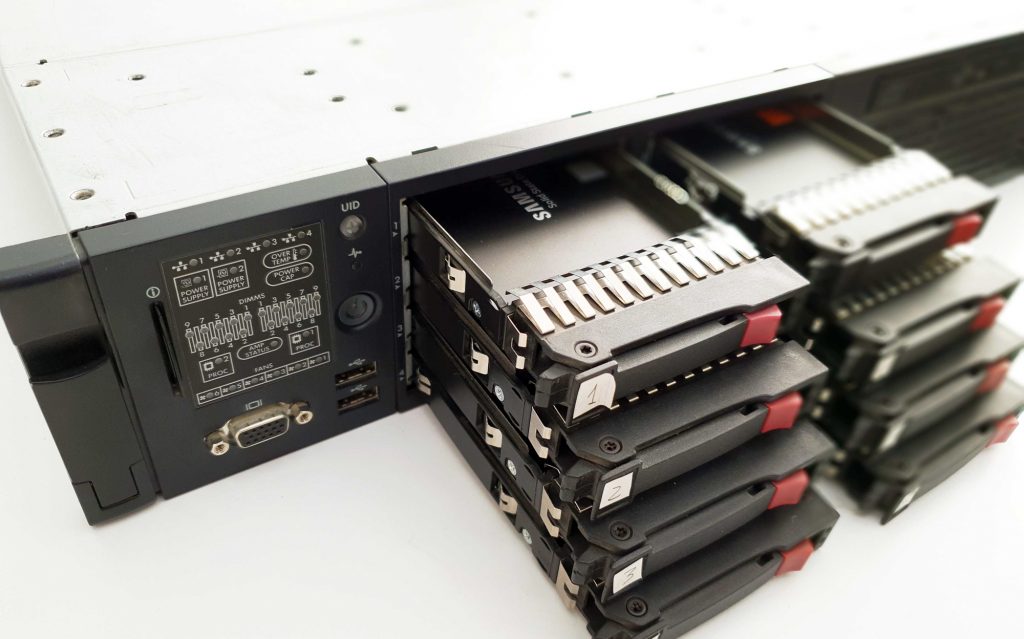
RAID striping efficiently spreads data across the disks, enhancing the overall performance and capacity of the system by meticulously organizing these fragments. Moreover, using RAID striping provides data redundancy, allowing data recovery and protection against disk failures.
Benefits of using RAID Striping
RAID striping is a fundamental data storage method that divides data into smaller blocks and distributes them across multiple drives in an array. This approach provides various advantages, such as:
Efficient Data Synchronization Across Multiple Disks
Data striping is a technique used in RAID to ensure efficient data synchronization by carefully distributing it across multiple hard drives in an array. This approach organizes data akin to organizing a library, where each book represents a portion of the data and is placed on different shelves. Retrieving or storing data becomes faster as the system can access multiple drives simultaneously.
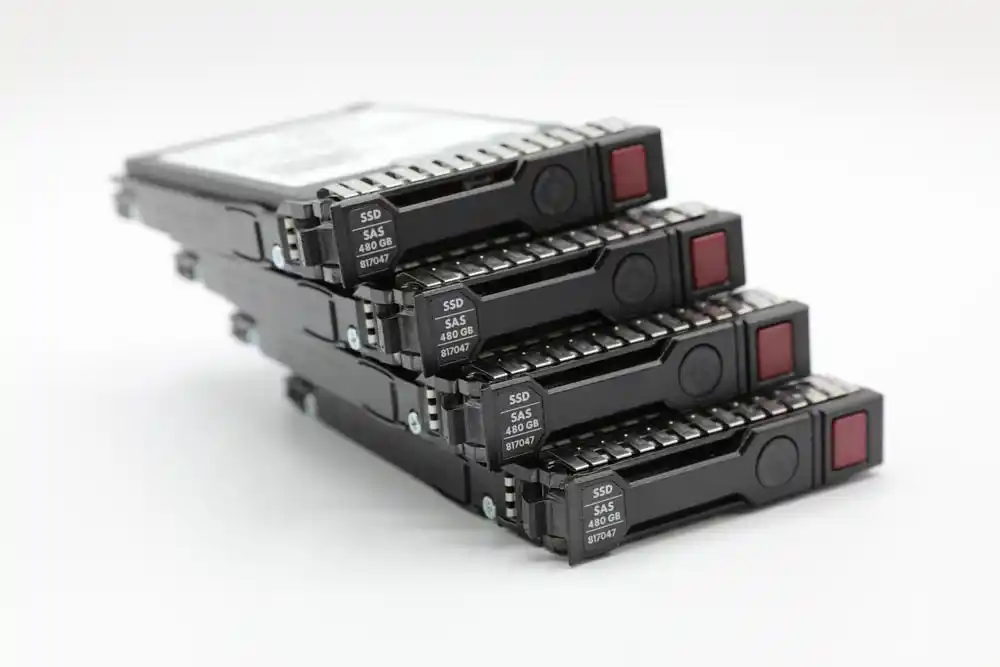
Foundational Fault Tolerance
RAID striping boosts performance and offers a fundamental level of fault tolerance. If one drive fails in a striped array, the data on that particular drive may be compromised.
However, the other drives preserve their data and remain unharmed. This basic form of redundancy is a safety measure, guaranteeing data availability and security during hardware failures.
Turbocharged Performance
RAID striping, a vital technique in data storage, intelligently divides data into smaller blocks or strips. Each strip is then assigned to a specific drive, optimizing system performance. This ingenious division allows for simultaneous access to multiple drives during data read and write operations, significantly boosting read and write speeds.
Picture it as a well-coordinated team of individuals working synergistically to effortlessly and efficiently complete a task, ensuring swift and responsive data operations. It maximizes productivity and enhances overall system efficiency, providing a seamless user experience.
Which Type of RAID is also Known as Disk Striping
Now that we have clearly understood the foundational vision behind disk striping in RAID, let us delve deeper into the specific RAID types closely associated with this method. These RAID types, often recognized as “disk striping,” are crucial in enhancing storage performance and data management.
Regarding RAID configurations, RAID 0 perfectly embodies the disk striping technique. RAID 0 striping, sometimes referred to as “striping without parity,” is purposefully designed with a singular goal in mind: to optimize performance through the art of striping data across multiple drives.
By distributing data chunks across multiple disks, RAID 0 leverages parallel access to enhance read and write speeds, significantly boosting overall performance.
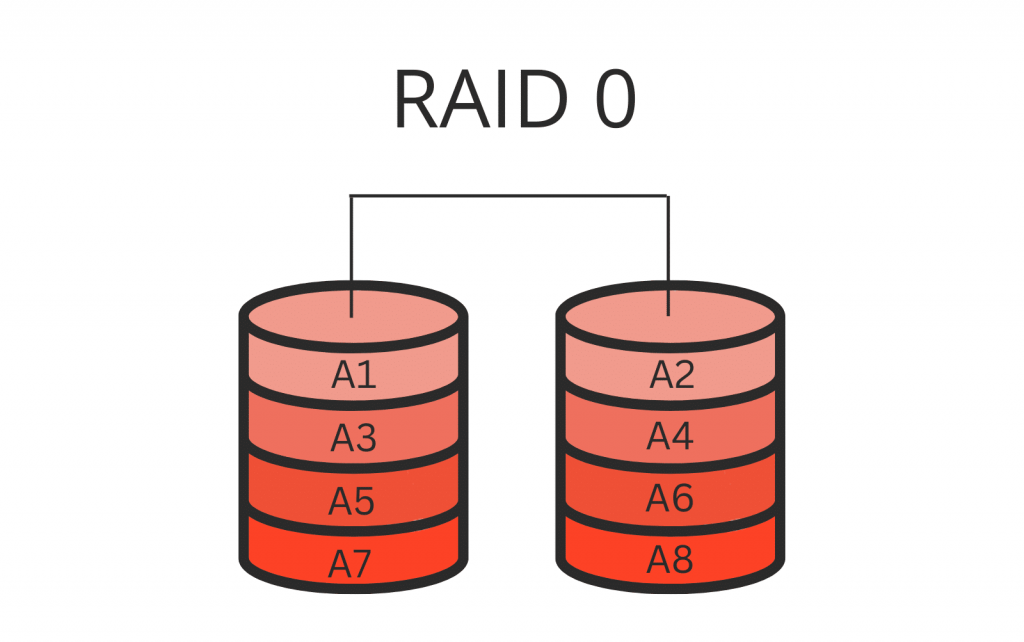
By implementing RAID 0 striping and the broader concept of disk striping in RAID configurations, users can achieve remarkable gains in storage performance, allowing for faster data access and improved system responsiveness.
RAID 0 Striping
RAID 0 disk striping breaks down the data into blocks or strips, evenly spreading them across multiple drives in the array. Each drive receives a portion of the data, allowing the array to read or write these segments simultaneously.
This coordination provides a notable performance increase since the array can leverage the collective speed of all its drives.
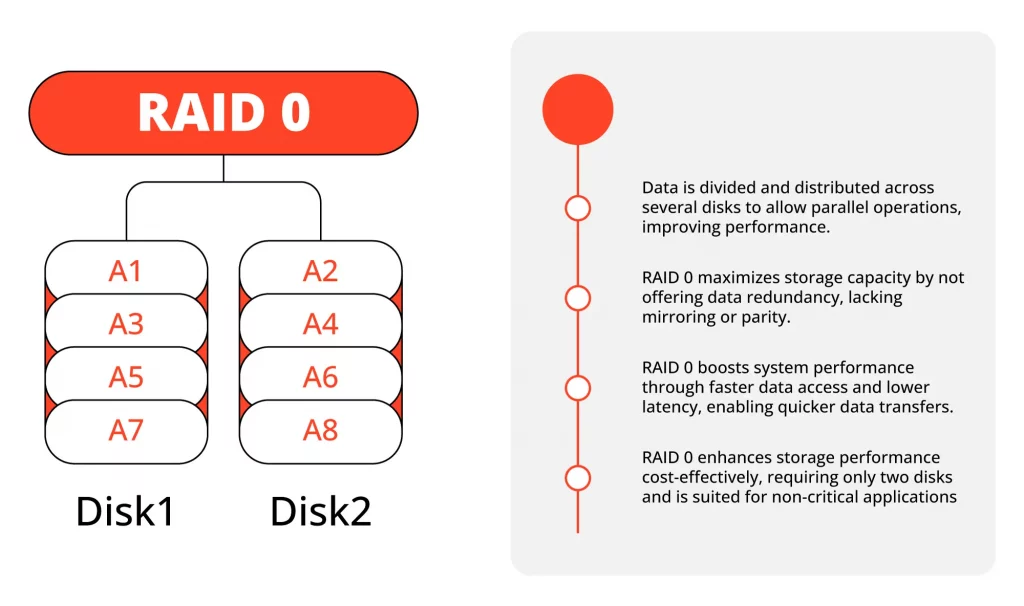
It is important to note that RAID 0 does not have redundancy or fault tolerance. If one drive fails in a RAID 0 setup, the entire array becomes vulnerable, posing a significant risk of data loss. Therefore, while RAID 0 provides optimal disk striping efficiency, it should only be utilized in situations prioritizing performance where other methods, such as regular backups, guarantee data redundancy.
The basic concept of RAID 0 revolves around using disk striping to attain outstanding speed, making it a valuable component of the RAID family for specific scenarios.
It’s worth mentioning that relying solely on Striped RAID isn’t enough to guarantee data protection. Mirroring and parity are also crucial. If you aim to safeguard your valuable information, particularly in situations involving RAID disk failures, it’s advisable to consult professionals in data recovery. PITS Global Data Recovery Services is here to assist in securing and recovering critical data, ensuring a balance between optimizing performance and maintaining data resilience in your storage solutions.
Frequently Asked Questions
Why is RAID 0 called striping?
Dividing data into strips or blocks and writing it to separate drives is understood as “striping,” which is what RAID 0 does. This procedure enhances data access speed and performance by spreading data across multiple drives.
What is a strip in RAID?
RAID spreads and stores a predefined data segment, a strip, across multiple drives in an array. Striping RAID configurations utilize these strips as the primary units for data distribution, improving data access speed and performance.
Which RAID types have striping?
RAID 0 utilizes only striping, RAID levels like RAID 1, RAID 5, and RAID 6 incorporate additional techniques like mirroring and parity for data redundancy and fault tolerance.
What is the difference between RAID mirroring and striping?
RAID mirroring (RAID 1) involves duplicating data across multiple drives to safeguard against drive failure and ensure data integrity. Conversely, RAID striping (RAID 0) optimizes performance by distributing data in smaller blocks or strips across multiple drives. While mirroring offers data protection, striping primarily focuses on enhancing speed.
